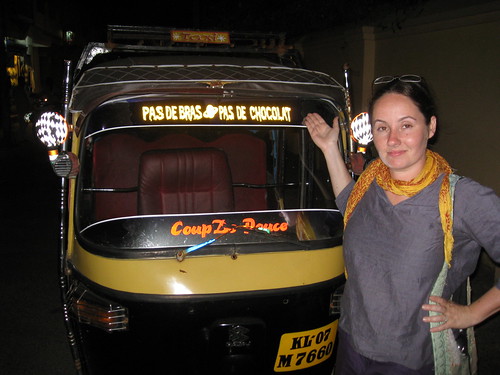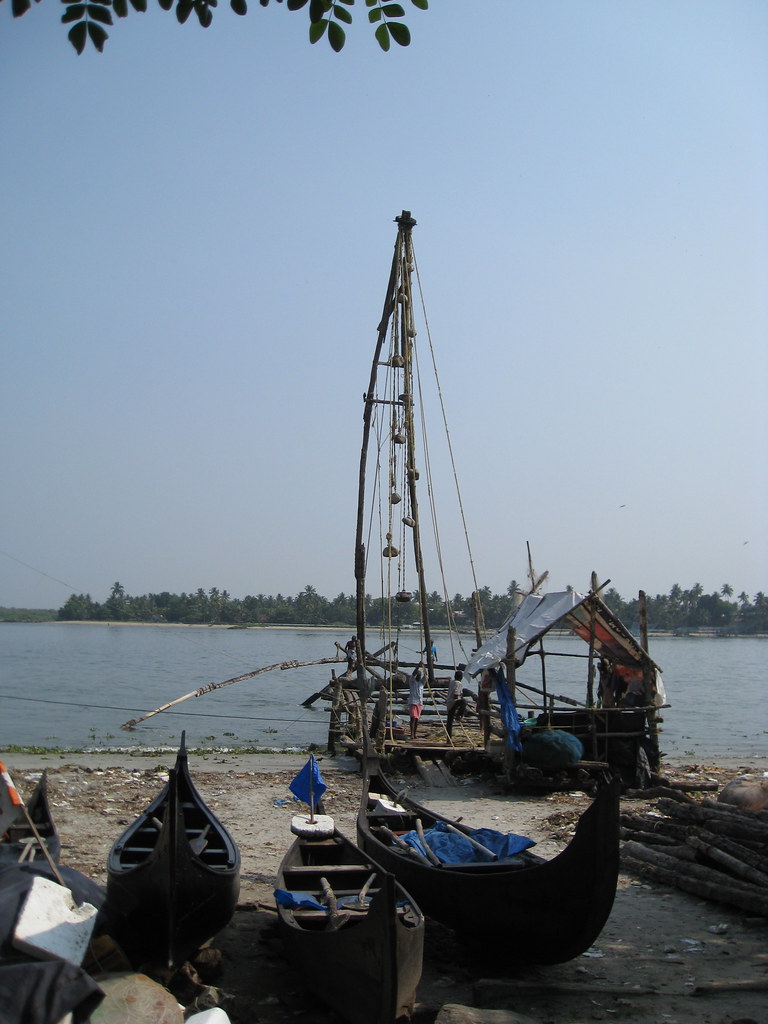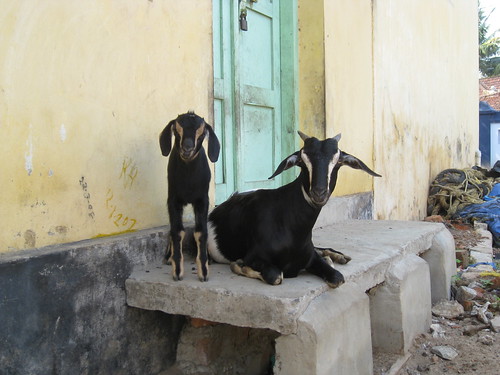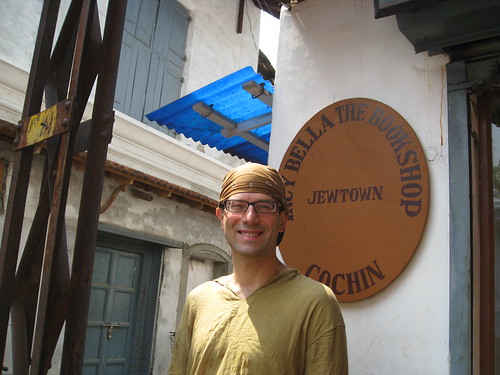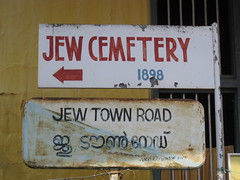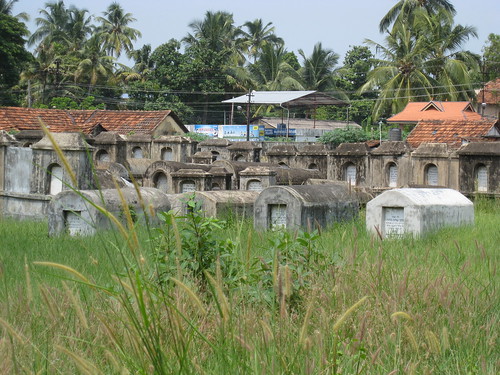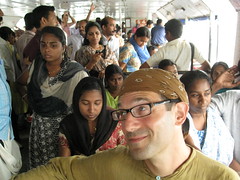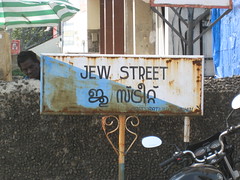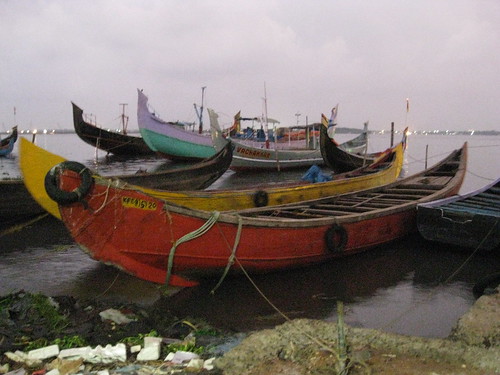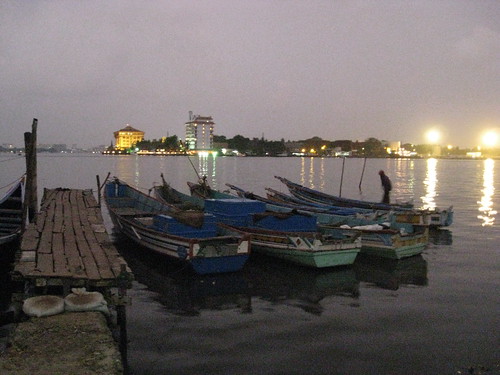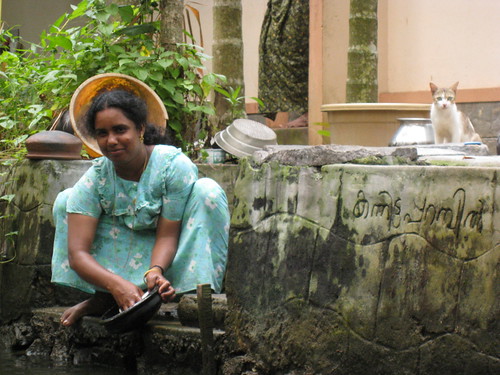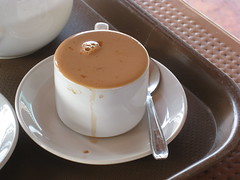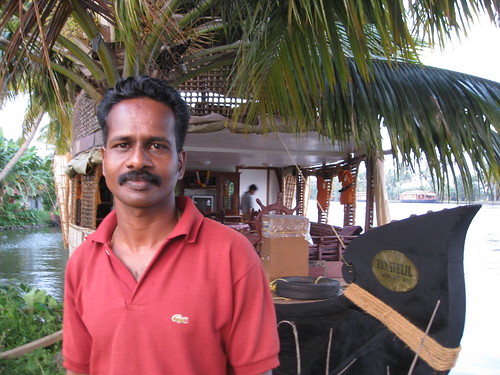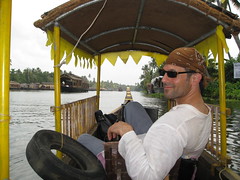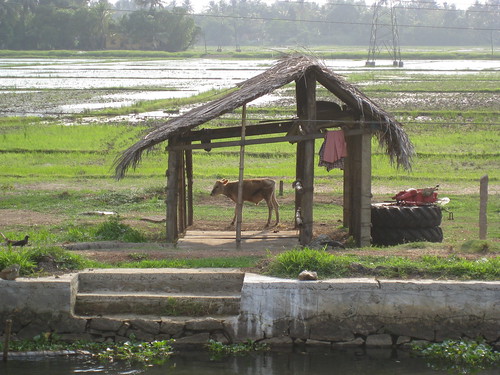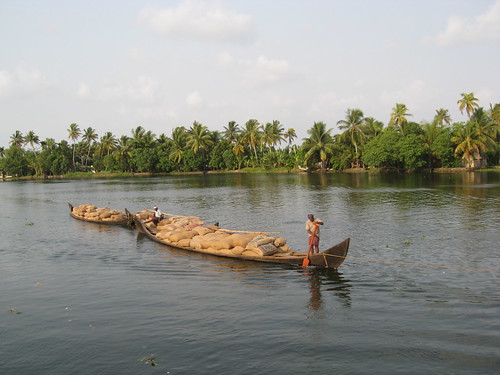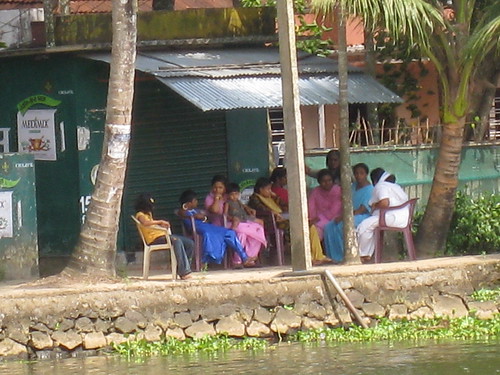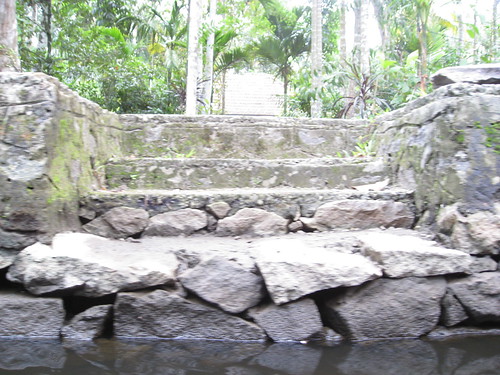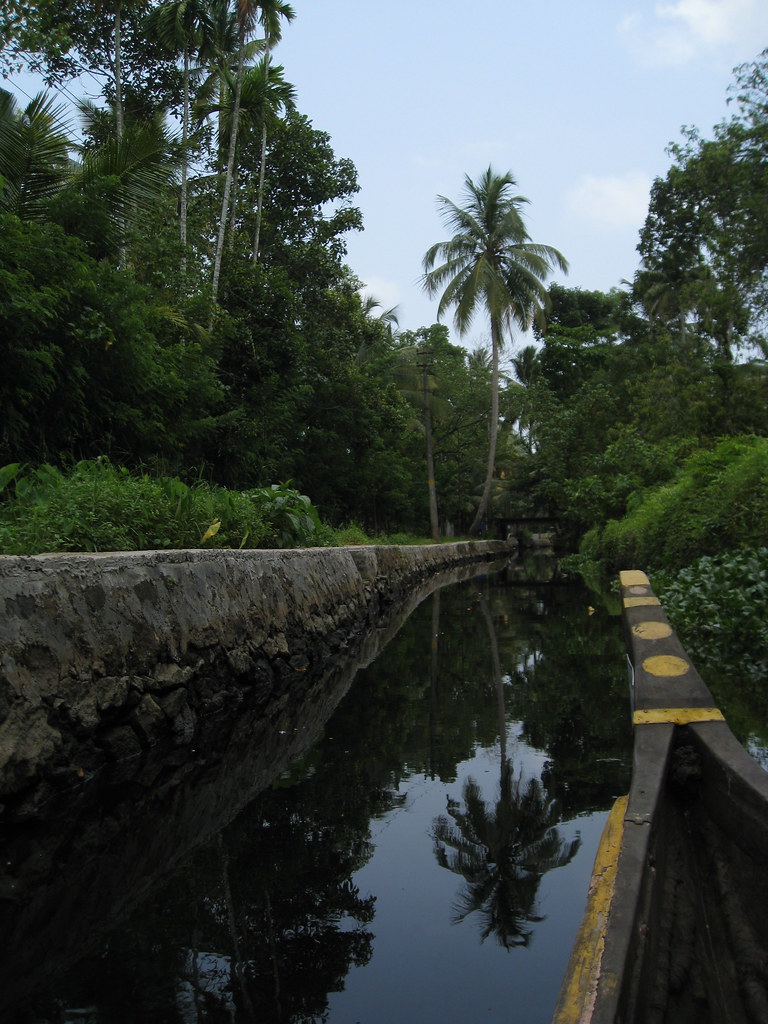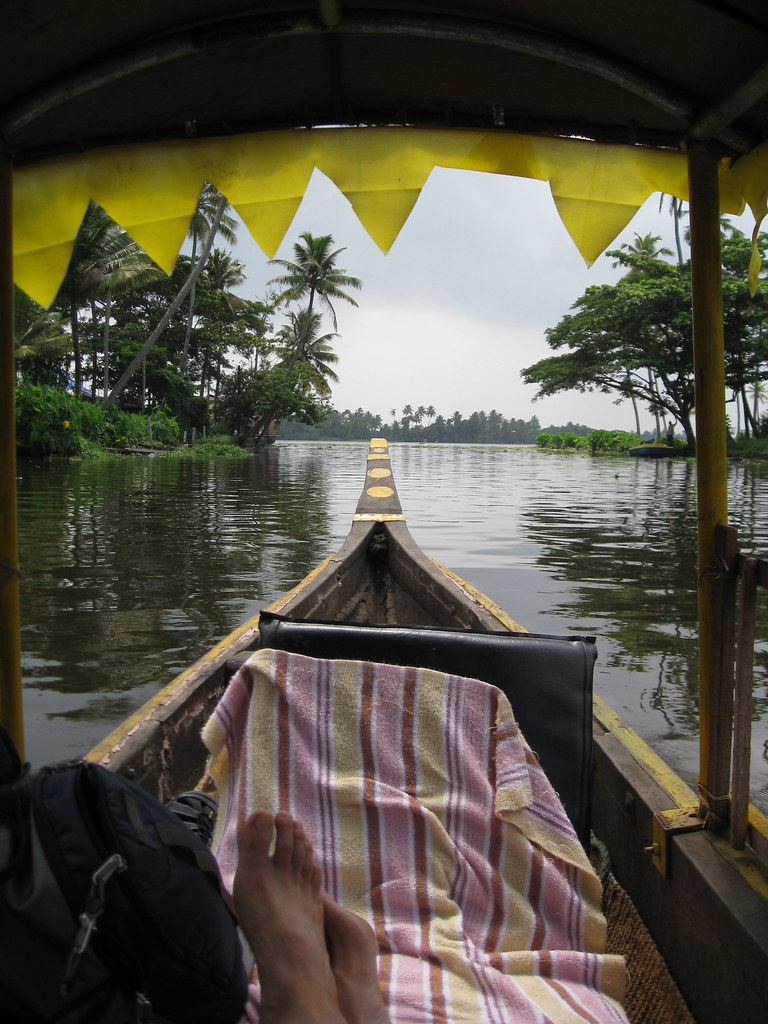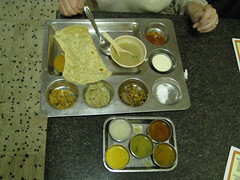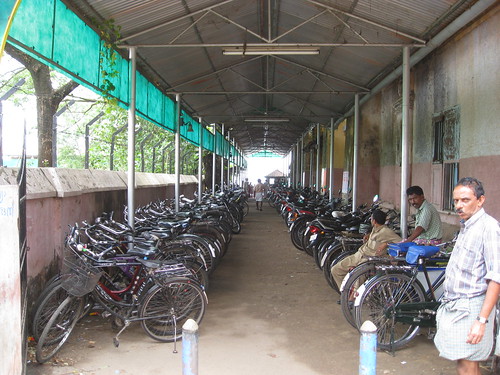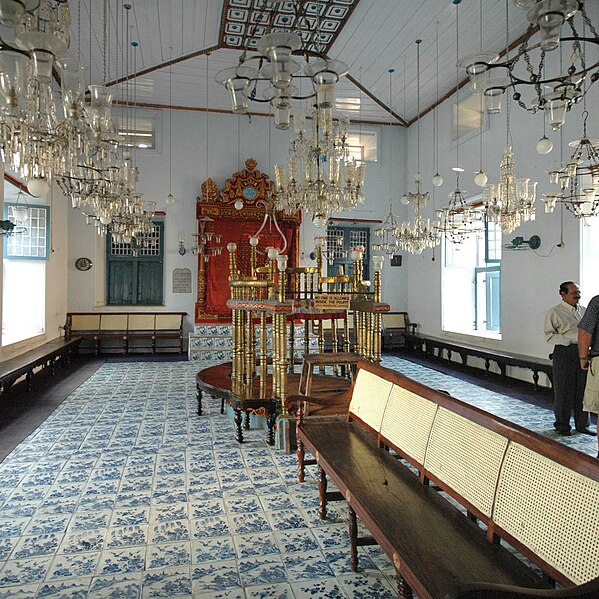
Photos of the Kochi paradesi synagogue interior courtesy of Wouter Hagens via Wikipedia Commons. We weren't allowed to take photos in the synagogue.
After a fun day of shopping, chatting, and exploring, we took a crack at going to a 400-year old synagogue for Shabbat. It was closed during the day b/c of Passover, but we were told that it might be open for the Friday service. Worth a shot.
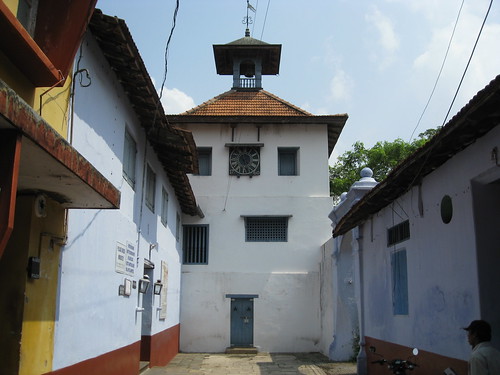
Once there, a Keralan man told us that there would be a service, but that it would be a short one, as it was Passover weekend and there weren’t enough men around that weekend for a minion (people were visiting their families and whatnot). I think that man might have been a shabbas-goy or something.
Eventually, a thin little old man in his 70s (80s?) in huge glasses and a kippah showed up. He looked like a cross between an Indian Don Ameche and my Grandpa Ned. He spoke to the Shabbas-goy in Hindi, then asked us if we wanted to come in for Shabbat. We eagerly nodded yes.
He led us in, and we removed our shoes, even though he said we didn’t have to.
The synagogue was beautiful, oozing 400 years of history from every wooden pew, every mosaic’d tile, from each ornate chandelier and each of the hundreds of colored blown-glass globes hanging from the ceiling.
It was smallish for a synagogue—maybe the size of two winnebagos side-by-side, with maybe a dozen pews in the back, a half-dozen along one side, and a few long benches along the other side. The walls, the ceiling, the podium—everything was touched by a love for this place and its history. Multiple chandeliers hung down, as did the hundreds of blown-glass bubbles (sea-glass?) and other ornaments
The center podium was similarly ornate. The floor was bare. A few stacks of siddurim lay next to the center podium. The three of us were the only people in the synagogue.

The old man motioned for Natacha to sit on the women’s; side, and bade me sit next to him on the men’s side. He had decent English, with an accent that was part Indian, part almost Yiddish. I wish I knew the man’s history, but I didn’t want to pry.
He had huge thick glasses. I imagined him to be a long-lived merchant in the area. I took a prayer book and sat in the back pew next to him.
We talked for a while, mostly me answering questions about where I was from and about American politics. I so wanted to ask him about himself, his life in India, but I was a guest in a revered place, and I didn’t feel it was my place.
A heavyset man in a sarong and kippah showed up and spoke to the old man in Hindi, glancing at me briefly. They chatted for a bit, then in accented English, he asked me where I grew up. I told him, “Los Angeles. California.” He smirked and said, “Los Angeles. California. Like I don’t know where Los Angeles is.” He would tease me about that several times over the course of the evening. Turns out the guy was a teacher from Cleveland, dividing his time between India and Israel (which would account for the accent).
He then hammered me with questions about where I was from, my religious background, my job, all in that asserting-status sort of way that I find Israelis do. He asked me where I spent Passover, and criticized me for not finding somewhere to spend Passover in India.” The Internet,” he said. “look up India and Passover,” as if it was as easy as that. Hell, maybe it was.
Soon, we all settled down and the men started praying. I’d read what I could from the siddur, and look around this beautiful space, at the blown-glass spheres in the ceiling…
…and this feeling came over me. Like I belonged, in a way I don’t anywhere else. The fact that here I was, half-way around the world, and these people took me in; and that together we enacted thousand-year-old rituals together, ones we all KNEW…filled me with such a sense of connection, of belonging, that I got choked up afterwards.
II felt so grateful to be there, to be accepted. Particularly in a country where we’re so out of place.
At the end of the service, the old man had the caretaker guy open up the arc, and we got to see and touch the four Torahs, each with a breast plate that was one of the first things that the Jews brought to Cochin, centuries ago.
We did the Kiddush over the wine at the center podium, then separated as the regulars went home or went visiting. It was one of the most genuinely moving experiences I’ve had in this country. Or ever.
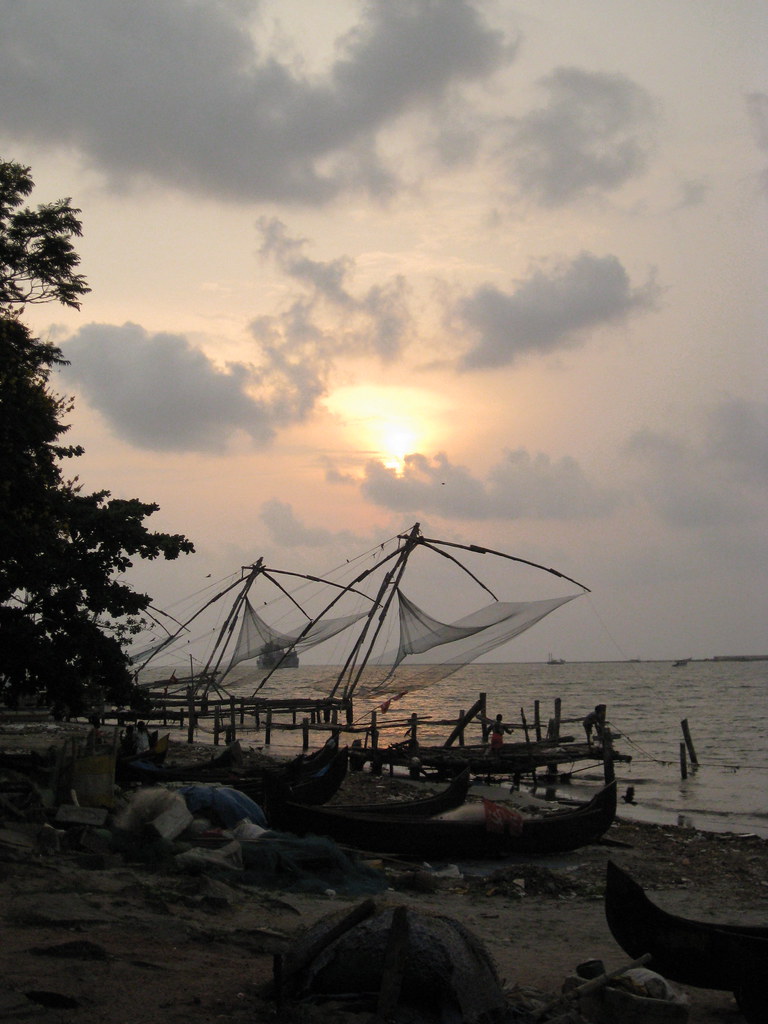 Traveling in India in the second-hottest month of the year, we lamented the weather many times during our travels. But here we were, in the south of india, i.e., India, only hotter.
Traveling in India in the second-hottest month of the year, we lamented the weather many times during our travels. But here we were, in the south of india, i.e., India, only hotter. We did take a walk around the town citadel, first, and saw parts of the town where I wished we could’ve spent more time in: The coast, with those huge Chinese fishing nets (we actually got to see those in action and they were impressive. Like a Gilligan’s island trap, only eight times bigger and they worked. We saw the area church (another centuries-old building), did a teeny bit more shopping, and piled into a cab.
We did take a walk around the town citadel, first, and saw parts of the town where I wished we could’ve spent more time in: The coast, with those huge Chinese fishing nets (we actually got to see those in action and they were impressive. Like a Gilligan’s island trap, only eight times bigger and they worked. We saw the area church (another centuries-old building), did a teeny bit more shopping, and piled into a cab.
